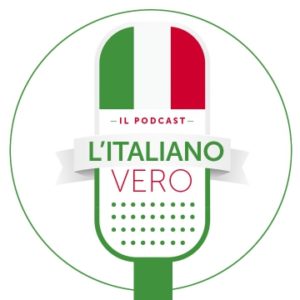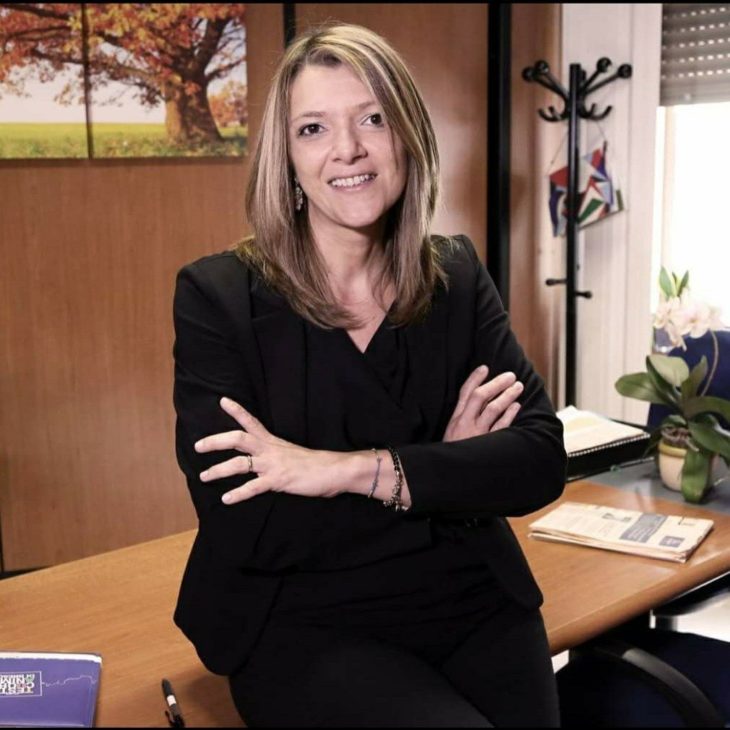
Blog in italiano – Tempo di lettura: 4 min
Blog in English: – Tempo di lettura: 4.5 min
Blog in italiano
________________
Oggi Cubo e Paolo hanno invitato, per parlarci di terminologia bancaria, una collega di Cubo, nonché ascoltatrice e patron del podcast. L’ospite mai visto è la bella Anna, come faccio a sapere che è bella? Beh…Cubo ha solo amiche belle!…
Cominciamo con il distinguere la figura del bancario dal banchiere, c’è infatti una sostanziale differenza:il primo è, come i nostri tre amici, colui che lavora in banca; il secondo invece è colui che possiede la banca o la amministra.
Partiamo allora con Anna parlando di sistemi di pagamento.
Il Pos (Point of sale) è quel dispositivo elettronico che si usa per effettuare un pagamento mediante moneta elettronica, ovvero tramite carte di credito, di debito o prepagate, quindi senza uso del contante.
Uno straniero in Italia potrebbe chiedersi perchè, quando siamo alla cassa del supermercato o di qualsiasi attività commerciale, ci venga posta la domanda: “Carta o bancomat?”.
E’ presto detto, in Italia ci sono due circuiti:
– bancomat (o carta di debito)che gira sul circuito Italia, si preleva in Italia come se si entrasse in banca a prelevare allo sportello, la somma prelevata scende (viene addebitata) subito sul conto corrente; il pagamento prevede l’inserimento del PIN, cioè di un codice personale e segreto.
– carta di credito che gira sul circuito Estero, la somma prelevata scende solo a metà del mese successivo, motivo per cui è la forma di pagamento più “amata”. Non è necessario inserire alcun codice.
I due circuiti sono spesso riuniti su una sola carta, ed è per questo che l’esercente dell’attività commerciale o del servizio fa la famosa domanda “Carta o bancomat?”
Adesso i circuiti di debito stranieri più famosi (Mastercard, Maestro) sono comunemente utilizzati anche in Italia, per cui alcune banche lasciano solo un circuito e la domanda non è più posta.
Il termine bancomat è usato anche semplicemente come sinonimo di strumento di pagamento diverso dal contante; il panettiere alla cassa chiede “Paghi con il bancomat?” per sapere semplicemente se usiamo contante o meno. O anche per indicare lo sportello fisico (quello che in inglese è l’ATM ), il luogo dove prelevare.
L’italiano vero accanto all’espressione corretta: “Vado allo sportello bancomat a prelevare” usa più semplicemente l’espressione “Vado a fare il bancomat” che non significa certamente “ Vado a costruire uno sportello di prelievo”!!!
Lo sportello indica la filiale della banca, quindi il luogo fisico dove andare di persona a fare un’operazione bancaria.
Ipotizziamo che uno straniero debba effettuare un bonifico bancario a favore di un’altra persona, cosa deve fare?
Se il bonifico è fatto dall’Europa, è sufficiente conoscere l’IBAN (International Bank Account Number) cioè le coordinate bancarie del beneficiario (è un codice di 27 caratteri alfanumerici); se invece il bonifico arriva da fuori Europa, serve anche il codice SWIFT (acronimo di Society for Worldwide InterBank Financial Telecommunications) che identifica la banca sul circuito internazionale.
Vanno poi indicati l’importo e la causale (cioè il motivo dell’operazione). La banca può prevedere anche una commissione sul bonifico, cioè un costo che il cliente deve sostenere, che rappresenta il prezzo richiesto dalla banca per eseguire l’operazione.
Uno straniero può fare un bonifico, per esempio per mandare dei soldi all’estero, anche se non è cliente di una banca?
Sì certamente, in questo caso si parla di bonifico per contanti, la commissione è più alta perché la banca deve censire il cliente, cioè richiedere e registrare tutti i i dati per l’identificazione del cliente.
Uno straniero può aprire un conto corrente? Se è residente sì, altrimenti c’è una normativa a parte. Prima di aprire un conto, è meglio chiedere il costo mensile o annuale del conto corrente e i costi delle diverse operazioni.
L’estratto conto è il documento che riepiloga la successione delle operazioni di accredito e di addebito registrate in un conto corrente nel corso di un determinato periodo di tempo.
Se il cliente vuole fare degli investimenti in borsa, va aperto anche un dossier titoli, cioè un fascicolo, un insieme di documenti inerenti il cliente e i suoi investimenti. “Dossier” è una parola francese che deriva dal latino dos, dorsum cioè dal dorso su cui veniva scritto il titolo della pratica contenuta nel dossier appunto.
La banca mette a disposizione dei clienti all’interno di propri locali adeguatamente protetti (caveau) delle cassette di sicurezza per la custodia di oggetti o documenti.
Bene ragazzi, dopo tante aride nozioni, ci solleva gli animi Cubo che conclude con una divertente citazione del suo professore di tecnica bancaria: “In banca si entra solo per rubare o essere derubati”.
Allora “stiamo freschi!” O eventualmente…”al fresco!
By Sara
►Ti piace il nostro podcast? sostienici al costo di un caffè
senza di voi non ci sarebbe il podcast:
https://www.patreon.com/litalianoveropodcast
►Contattaci per idee su nuovi episodi:
https://www.litalianovero.it/wp/contatti/
►Facebook:
https://www.facebook.com/litalianoveropodcast/
►Instagram:
https://www.instagram.com/litalianoveropodcast/
►YouTube
https://bit.ly/2zvrbOK
Blog in Inglese
________________
Ciao Italiani Veri!
Today Cubo and Paolo invited a colleague of Cubo, as well as listener and patron of the podcast, to talk about terminologia bancaria (banking terminology). The first ever guest is the beautiful Anna, how do I know she is beautiful? Well … Cubo only has beautiful friends! …
Let’s start by distinguishing the figure of the bancario (banker) from the banchiere (bank manager), there is in fact a substantial difference: the first is, like our three friends, the one who works in the bank; the second is the one who owns the bank or manages it.
So let’s start with Anna talking about sistemi di pagamento (payment systems).
Il Pos (The POS – Point Of Sale) is the electronic device that is used to make a payment by moneta elettronica (digital currency), or by carte di credito credit card, di debito debit card or prepagate prepaid cards, therefore all without the use of cash.
A foreigner in Italy may wonder why, when we are at the checkout of the supermarket or any commercial activity, we are asked the question: “Carta o bancomat?” means Card or Bancomat that is a domestic debit circuit that runs just in Italy.
It is easily explained, in Italy there are two circuits:
– bancomat (or carta di debito debit card) that runs on the Italy circuit, is withdrawn in Italy as if you entered the bank to withdraw at the counter, the amount withdrawn scende (drops, is debited) immediately to the current account; the payment requires the PIN, i.e. a personal pin or secret code, to be entered.
– carta di credito (credit card) that runs on the foreign circuit, the amount withdrawn doesn’t drop until the middle of the following month, which is why it is the most “loved” form of payment. It is not necessary to enter any code.
The domestic debit circuit and the foreign one are often combined on one card, which is why the operator of the business or service asks the famous question “Carta o bancomat”
Now the most famous foreign debit circuits (Mastercard, Maestro) are also commonly used in Italy, so some banks leave only one circuit and the question is no longer asked.
The term bancomat is also used simply as a synonym for a payment instrument diverso dal contante (so card); the baker at the checkout asks “Are you paying with Bancomat?” to simply know if we use cash or not. Or even to indicate the sportello fisico (physical counter; what in English is called ATM), the place to pick up.
The real Italian instead of the correct expression: Vado allo sportello bancomat a prelevare “I go to the ATM to withdraw” uses the simpler expression “Vado a fare il bancomat” (“I am going to withdraw”) which certainly does not mean “I am going to build (fare) a withdrawal counter” !!!
The word sportello (counter) indicates the bank branch, then the physical place to go for a bank transaction in person.
Let’s assume that a foreigner must make a bank transfer to another person, what should he do?
If the transfer is made from Europe, it is sufficient to know the l’IBAN (IBAN – International Bank Account Number), i.e. the bank details of the beneficiary (it is a code of 27 alphanumeric characters); if instead the transfer arrives from outside Europe, you also need the SWIFT code (acronym for Society for Worldwide InterBank Financial Telecommunications) which identifies the bank on the international circuit.
Then the l’importo (amount) and la causale the reason (i.e. the reason for the operation) must be indicated. The bank can also provide a commissione (commission) on the transfer, that is, a cost that the customer must bear, which represents the price requested by the bank to perform the operation.
Can a foreigner make a transfer, for example to send money abroad, even if he is not a customer of a bank?
Yes, of course, in this case we are talking about bonifico per contanti (cash transfer), the commission is higher because the bank must censure (register/vet) the customer, that is, request and record all the data for customer identification.
Can a foreigner aprire un conto corrente open a checking account? If you are a resident, yes, otherwise there is a separate regulation. Before opening an account, it is best to ask for the monthly or annual costo (cost) of the checking account and the costs of the different transactions.
L’estratto conto (The account statement) is the document that summarizes the succession of credit and debit transactions recorded in a current account during a given period of time.
If the client wants to make investments on the stock exchange, a dossier titoli (securities dossier) must also be opened, that is, a file, a set of documents relating to the client and his investments. “Dossier” is a French word that derives from the Latin dos, dorsum that is from the spine on which the title of the practice contained in the dossier was written.
The bank provides customers with cassette di sicurezza (safe deposit boxes) for the safekeeping of objects or documents in its adequately protected rooms (vaults).
Well guys, after so many arid notions, Cubo raises our spirits which concludes with a funny quote from his professor of banking technique: “You only enter the bank to steal or be robbed”.
Then “stiamo freschi!” (“let’s stay cool!”) Or eventually … “al fresco!” (in the slammer!)
By Kevin (ItalianRocks)
►Did you like the podcast? Support us at the cost of a coffee
without you there would be no podcast:
https://www.patreon.com/litalianoveropodcast
►Contact us for ideas about new podcasts:
https://www.litalianovero.it/wp/contatti/
►Facebook:
https://www.facebook.com/litalianoveropodcast/
►Instagram:
https://www.instagram.com/litalianoveropodcast/
►YouTube
https://bit.ly/2zvrbOK
 Settembre 9, 2019
Settembre 9, 2019 24 min
24 min Luglio 29, 2019
Luglio 29, 2019 13 min
13 min Luglio 15, 2019
Luglio 15, 2019 24 min
24 min Luglio 1, 2019
Luglio 1, 2019 15 min
15 min Giugno 17, 2019
Giugno 17, 2019 21 min
21 min Maggio 30, 2019
Maggio 30, 2019 29 min
29 min Maggio 9, 2019
Maggio 9, 2019 21 min
21 min Aprile 30, 2019
Aprile 30, 2019 28 min
28 min Aprile 17, 2019
Aprile 17, 2019 15 min
15 min Aprile 10, 2019
Aprile 10, 2019 24 min
24 min Aprile 3, 2019
Aprile 3, 2019 24 min
24 min Gennaio 26, 2020
Gennaio 26, 2020 21 min
21 min Gennaio 12, 2020
Gennaio 12, 2020 20 min
20 min Dicembre 29, 2019
Dicembre 29, 2019 24 min
24 min Dicembre 15, 2019
Dicembre 15, 2019 21 min
21 min Dicembre 1, 2019
Dicembre 1, 2019 12 min
12 min Novembre 17, 2019
Novembre 17, 2019 min
min Novembre 3, 2019
Novembre 3, 2019 20 min
20 min Ottobre 20, 2019
Ottobre 20, 2019 14 min
14 min Ottobre 7, 2019
Ottobre 7, 2019 9 min
9 min Settembre 23, 2019
Settembre 23, 2019 33 min
33 min Gennaio 9, 2024
Gennaio 9, 2024 6 min
6 min Dicembre 2, 2022
Dicembre 2, 2022 31 min
31 min Ottobre 8, 2022
Ottobre 8, 2022 18 min
18 min Dicembre 25, 2021
Dicembre 25, 2021 1 min
1 min Settembre 18, 2021
Settembre 18, 2021 21 min
21 min Agosto 14, 2021
Agosto 14, 2021 17 min
17 min Maggio 4, 2020
Maggio 4, 2020 32 min
32 min Aprile 12, 2020
Aprile 12, 2020 41 min
41 min Agosto 26, 2019
Agosto 26, 2019 18 min
18 min Agosto 12, 2019
Agosto 12, 2019 11 min
11 min Giugno 5, 2019
Giugno 5, 2019 9 min
9 min







claudio
quiero apender
Juliana Bolzan
In Brasile le tasse per comprare in una moneta straniera con la carta di credito o debito è altissima. Quindi quando siamo all’estero usiamo soprattutto il contante. Credo che questo sia un incomodo alle vicende straniere.
L'italiano vero
Ciao Juliana,
Grazie per il tuo messaggio! Ci piace sapere come funzionano le cose nelle altre nazioni. Noi invece paghiamo solitamente tra il 2% e il 4% di commissioni, ma oramai la concorrenza è molto alta e non è difficile trovare banche che non ne applicano alcuna. Ti consiglio di fare una ricerca on-line sicuramente troverai qualcosa di conveniente anche in Brasile.
Un caro saluto.
Massimo e tutta la squadra degli Italiani Veri.🎙🇮🇹